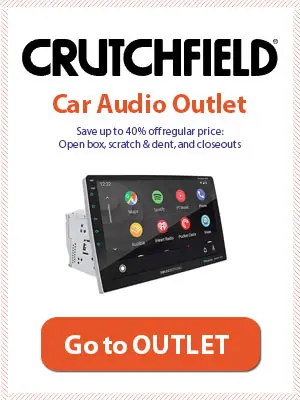How many decibels is a good signal-to-noise ratio?
Any value greater than 80 decibels is considered a good signal-to-noise ratio for an amplifier.
A signal-to-noise ratio (s/n ratio) is a vital parameter for determining the quality of an audio device— be it an amplifier, subwoofer, or speaker. When it comes to amplifiers, any signal-to-noise ratio equals to or bigger than 80 decibels is considered ideal for the optimal audio experience.
What is a signal-to-noise ratio for an amplifier? Why is it important? How much attention one should pay to its value while buying an amp?
We will try to answer all these questions in this post.
Table of Contents
What Is Signal-to-Noise Ratio?
The signal-to-noise ratio is a comparative value that matches the strength of the amplifier’s signal (output value) with its intrinsic noise floor (unwanted signal, internal hums, distortion, etc.). The value of the s/n ratio is given in decibels and often entails a technical calculation that uses log info and other complex data sets.
However, if you know the loudness of the output signal and the noise floor of the amp, you can calculate its signal-to-noise ratio using this formula.
Signal-to-noise ratio = Signal strength / noise strength
Why Factoring in Signal-to-Noise Ratio Is Important?
The signal-to-noise ratio indicates how good an amplifier is in producing the desired results amid the noise of unwanted signals.
The higher the s/n ratio, the better an amp’s performance.
Let’s try to understand the importance of the s/n ratio with the simplest of an example.
Suppose you are talking to someone in an open-air truck with an ambient sound (noise floor) of 50 decibels. The loudness of a normal human conversation is around 50-60 decibels. Going by these numbers, both of you will have to speak with at least 100-decibel loudness to continue the conversation while clearly hearing each other.
The same basic principle applies to amps. They need to produce a signal (output) that can offset the noise and then produce enough decibels for a good listening experience. Since car stereo sound in the range of 80-90 decibels is deemed good, an amp should have an s/n ratio within the same range.
How Much Attention Should Be Paid to Signal-to-Noise Ratio While Buying an Amp?
The signal-to-noise ratio is an important parameter to consider while buying an amp. However, once the s/n ratio reaches a certain value, it doesn’t make too much difference.
For instance, an amp with an s/n ratio of 80 dB is a better option than an amp with, say, 50db.
However, two amps with s/n ratios of 80 and 90 decibels respectively more or less produce the same sound quality.
In short, you don’t have to stress over the difference of the s/n ratio in single digits while buying an amp. If there is a tie between two amps with all their specs except for the s/n ratio, factor in the price.
If you can get an amp with 83db at a lesser price than the 86db alternative, you should stick to the lower-priced option.
